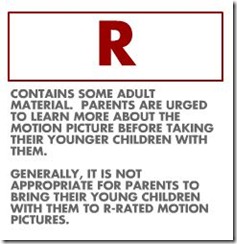It is getting better but many economic developers, including those with my background in visitor-centric economic and cultural development, seem more than a little “macho-man,” maybe even chauvinistic. And I hope it doesn’t take one to know one!
So a decade ago when Richard Florida first began to publish his data analysis on the bellwether “creative class,” (formerly known as knowledge workers or people who “think” for a living) it wasn’t surprising when many economic developers, addicted to “big game hunting,” either blew his work off as a fad or more often perverted the nomenclature to justify anything they happened to be doing.
Just as quickly though, more savvy economic developers coined the term “economic gardening” based on Florida’s data to describe a far better way to appeal to the Creative Class than the traditional “big-game” hunting approach with its over-reliance on huge incentives and mega cultural and sports facilities and events.
As you can imagine, “gardening” just didn’t jive with the macho mindset of many and while it is easy to quibble with
Florida, his findings have proven dead on over the years. Today he is even featured in mainstream media frequented by the macho-prone such as the ESPN Radio talk show The Herd with Colin Cowherd.
Cowherd loves to antagonize listeners by belittling college basketball as being small town and rural while the NBA is about big cities, diversity and tattoos but I’ll save that for another blog. I just hope he actually reads Florida’s books, especially the part about the turn-off of “generica.”
After reading Florida and studying his data beginning a decade ago, I could immediately identify examples in Durham that were, from what I was hearing from newcomers and relocating executives, already making the community a center of creativity.
Maybe it resonated more deeply with me than others not only because I actually read and studied his books but because his remedies dovetailed nicely with Durham’s strategic focus on “placed-based assets” and inherent Durham brand values like “genuine, textured and authentic.”
Florida’s data signaled to communities that while the creative class “occasionally,” to use his words, attends “big-ticket” sports or cultural events, to be compelling as a place to live, work or visit, “street-culture” is the essential ingredient.
Creatives are drawn to districts that while not world-class or major league are “indigenous,” “organic,” “eclectic,” “social and interactive,” and offer a “multidimensional” “smorgasbord,” allowing people to “modulate the level and intensity” of their experience compared to “a single, one-dimensional experience that consumes a lot of recreational resources,” again to use his words.
All I had to do ten years ago was look at the organic and eclectic nature of districts like Brightleaf, Ninth Street and just-emerging Rockwood as perfect examples of just what Florida meant.
Just as I was leaving on my most recent cross country trip, journalist and historian Jim Wise chronicled the emergence of another indigenous Durham district that fits the definition, NoCO for (north of Corporation Street.) anchored by the City’s now restored Historic Durham Athletic Park, made famous in the movie Bull Durham and operated as a training center by Minor League Baseball.
To me developer Bob Chapman, as unpretentious as Durham itself, is the unofficial mayor of NoCO and George Davis of Stone Bros. & Byrd is the elder statesman of what plow-to-pint Fullsteam’s co-founder Sean Lilly Wilson coined as the “do-it-yourself” district.
Even the nickname is organic.
NoCo is home to an experimental theater, a historic country store/garden center, a sculpture gallery, a rocking nightclub, a micro-brewery and tavern, a beloved corner hamburger stand, event space, an after-school studio for teens, residential lofts, a tuition-free public charter school and much more.
It also features two tiny, historic, corner gas stations which Chapman has restored and adapted for a restaurant and yoga studio.
Hopefully, Durham will see more organic districts emerge in the City Center, East Durham and other parts of the community. I say emerge because these districts can’t be master planned.
Try as they may, massive, heavily packaged, single-owner districts are no substitute and the magic of indigenous, organic, small room districts cannot simply be bottled and then replicated into what Florida terms “generic,” “heavily programmed,” “Disneyland facsimiles,” “safe, secure and predictable.”
Durham is fortunate to have many good developers like Chapman who “get it” and even its mega-malls and master-planned districts do a good job of trying hard to reflect the community sense of place.
We’re also fortunate that the City, County, Downtown Durham Inc, and Durham Chamber have worked just as hard to facilitate both organic districts, although at much less expense and with much less certainty and control (e.g. Durham Central Park anchored by the Durham Farmers Market,) as they have to enable excellent master-planned districts like American Tobacco, West Village and The Streets at Southpoint.
Durham is also fortunate that DCVB, as the agency for marketing the community as a whole, has always been able to weave both types of districts into Durham’s story in such a way as to drive the demand that helps make them sustainable.
But the eclectic, organic districts are what make Durham, Durham and they foster the unique sense of place that enables mega-districts where newer facilities seek to emulate the look and feel of these more humble but equally significant areas of Durham.
You’ll spot new ones as they emerge because again in Florida’s words, they “cluster along certain streets lined with a multitude of small venues. These may include coffee shops, restaurants and bars, some of which offer performance or exhibits along with food and drink; art galleries; bookstores and other stores.”








